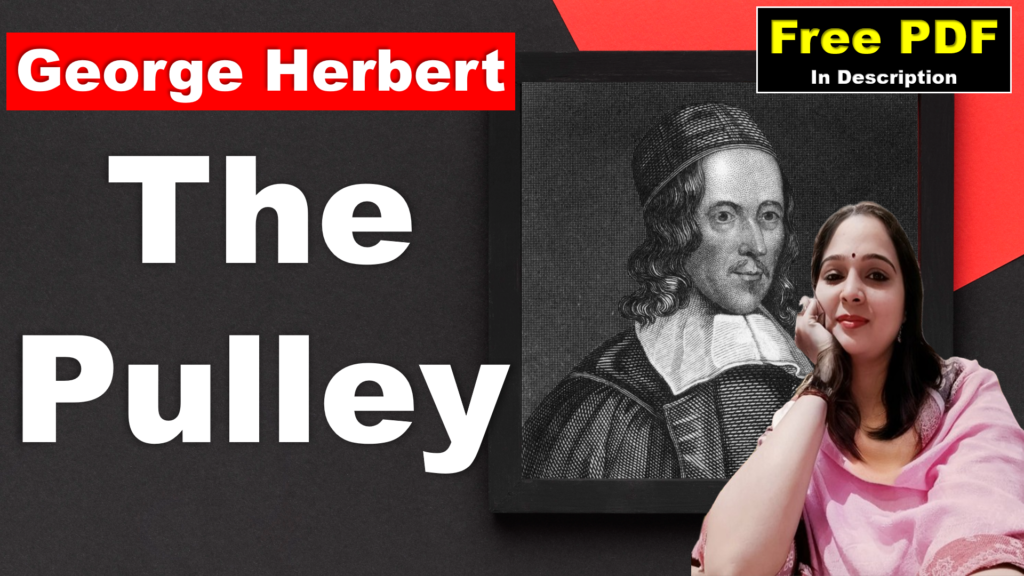
The Pulley by George Herbert | The Pulley | George Herbert | Explanation | Summary | Key Points | Word Meaning | Critical Appreciation | Questions Answers | Free PDF Download – Easy Literary Lessons
The Pulley
When God at first made man,
Having a glass of blessings standing by,
“Let us,” said He, “pour on him all we can.
Let the world’s riches, which dispersèd lie,
Contract into a span.”
So strength first made a way;
Then beauty flowed, then wisdom, honor, pleasure.
When almost all was out, God made a stay,
Perceiving that alone, of all His treasure,
Rest in the bottom lay.
“For if I should,” said He,
“Bestow this jewel also on My creature,
He would adore My gifts instead of Me,
And rest in nature, not the God of nature;
So both should losers be.
“Yet let him keep the rest,
But keep them with repining restlessness;
Let him be rich and weary, that at least,
If goodness lead him not, yet weariness
May toss him to My breast.”
The Pulley by George Herbert: YouTube Link
line-by-line explanation of the poem
Line 1: When God at first made man,
This line introduces the idea of God creating human beings.
Line 2: Having a glass of blessings standing by,
With a collection of blessings ready to give to man.
Line 3: “Let us,” said He, “pour on him all we can.
God decides to give humanity as many blessings as possible.
Line 4: Let the world’s riches, which dispersèd lie,
God wanted to give man all the riches of the world, which were scattered all around.
Line 5: Contract into a span.”
God wanted to concentrate all the riches of the world into one man.
Line 6: So strength first made a way;
First, God gave man strength.
Line 7: Then beauty flowed, then wisdom, honor, pleasure.
Then God gave man beauty, wisdom, honor, and pleasure.
Line 8: When almost all was out, God made a stay,
When God had given man almost all the blessings he could think of, he stopped.
Line 9: Perceiving that alone, of all His treasure,
God realized that there was one blessing he had not yet given man: rest.
Line 10: Rest in the bottom lay.
Rest, or contentment, was the last and deepest blessing.
Line 11: “For if I should,” said He,
God said to himself, “If I give man the gift of rest,…”
Line 12: “Bestow this jewel also on My creature,
“If I give man this precious gift,…”
Line 13: He would adore My gifts instead of Me,
“He will worship my gifts instead of me.”
Line 14: And rest in nature, not the God of nature;
“And he will find rest in the natural world, not in the God who created it.”
Line 15: So both should losers be.
“In this way, we will both lose. I will lose a worshiper, and man will lose his chance to find true happiness in me.”
Line 16: “Yet let him keep the rest,
However, I will let man keep all the other blessings I have given him
Line 17: But keep them with repining restlessness;
But let him be restless and unsatisfied with them
Line 18: Let him be rich and weary, that at least,
Let man have all the riches he wants, but let him be tired of them,
Line 19: If goodness lead him not, yet weariness
So that if his goodness does not lead him back to me, then perhaps his weariness will,
Line 20: May toss him to My breast.”
Bring him back to me.





